GHz Socket Lid Options
GHz elastomer, spring pin and other socket technologies can accommodate different lid options depending upon the application requirement. Typical choices are swivel-lid, clamshell, double-latch, integral heatsink, etc. Custom lid solutions are also available.
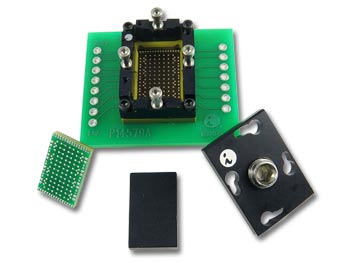

Swivel Lid
Sockets are constructed with shoulder screws and a pivoting lid. This simple and low cost approach is ideal for field use or where insertions are infrequent. The socket is mounted on the target PCB without soldering and uses the industry’s smallest footprint (only 2.5mm needed on each side). To use, insert the device into the socket, place the compression plate, and swivel the lid to close. Vertical force is applied using a torque tool via the center compression screw. A proper torque driver is recommended for optimum performance and reliability.
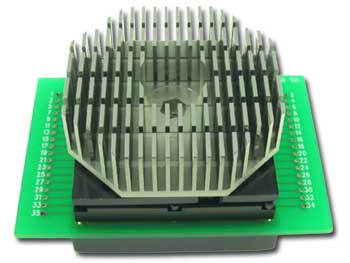

Heatsink Compression Screw
Compression screws are also available with optional heatsinks, which can be designed specifically for the customer’s application.
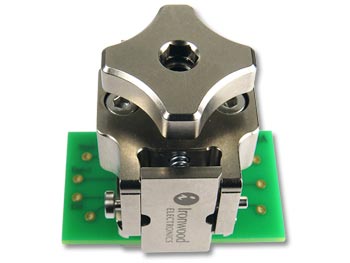

Clam Shell Lid with Compression Screw
The lid is attached to the base using a hinge – simply place the device inside the socket and close the lid using the latch. Apply vertical force by turning the compression screw.
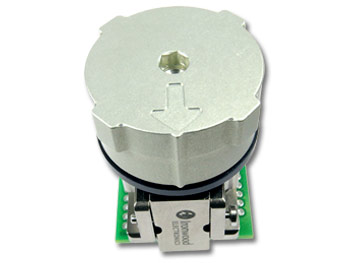

Torque Indicating Compression Screw
The torque driver can also be integrated directly into the compression screw. These are precision calibrated to the proper torque before leaving the factory.
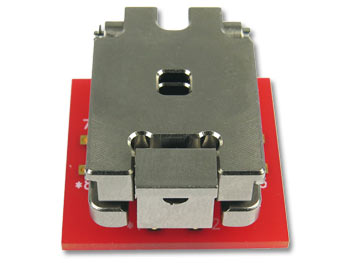

Snap Lid with Spring Loaded Compression
A variation of the clamshell lid where the correct compression is designed into the lid using calibrated springs between the lid and the compression plate. Simply place the IC and snap the lid closed for quick and easy insertions.
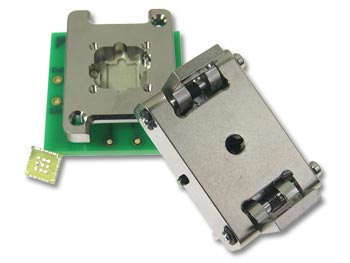

Removable Double Latch Lid for ATE
After initial setup, the lid can be easily removed for use with automated test equipment (ATE). Simply press both latches to remove. Similar to Snap Lids, the vertical force is applied by compression springs integrated between the lid and the compression plate
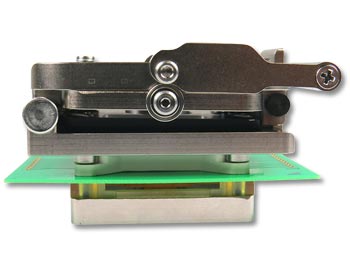

High Performance Lever/Cam Lid
Lever and cam actuation simplifies application of 100+ lbs of vertical force with simple finger movement. This unique design enhances the user experience when using high pin count devices. The lid also features an integrated spring loaded compression plate that maintains force across various environmental conditions.
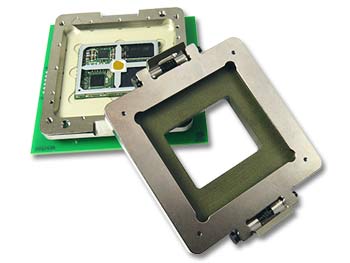

Open Top Lid
Optional open top designs provide access to the top side of the die or module for access to components or probe points during qualification test.
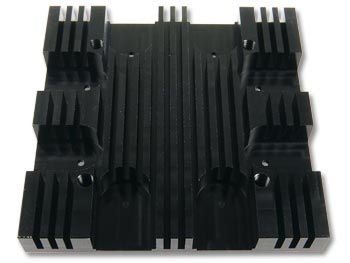

Custom Heatsinks
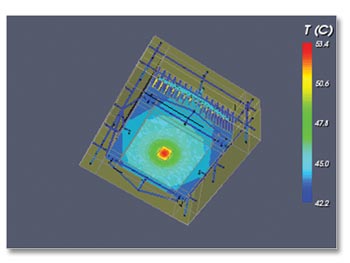
Ironwood has significant experience both designing and manufacturing custom heat-sinks. With extensive in-house machining capabilities, we can quickly design, analyze, and fabricate nearly any custom heatsink.
Capabilities
- Unidirectional fins
- Bidirectional fins
- Threaded pillars
- Aluminum, Copper
Thermal resistance is directly proportional to thickness of the material and inversely proportional to thermal conductivity of the material and surface area of heat flow. In short, heatsink design is a complex task requiring extensive math, finite element analysis, and fluid dynamics. Ironwood utilizes QFin, in conjunction with SolidWorks, to provide analysis and assurance that heatsinks will perform as designed, while at the same time being manufacturable. Many variables, such as surface area, mass, structural rigidity, fin geometry, air flow, etc., can all be adjusted for optimal thermal design.